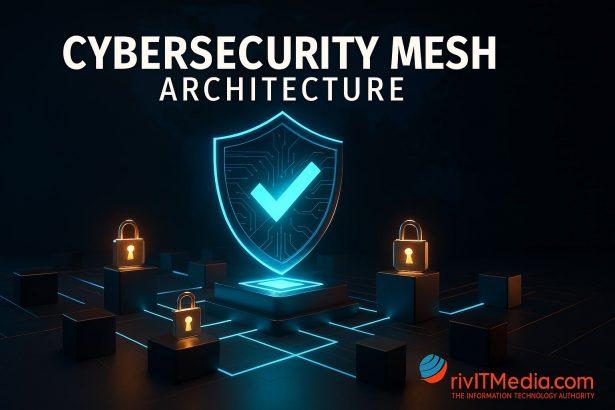Cybersecurity Mesh Architecture (CSMA) is a modern security model designed to protect dynamic, distributed business environments. Rather than relying on a traditional, centralized perimeter, CSMA secures each individual asset, system, or user through a collaborative, interconnected network of security tools and protocols.
This approach is especially relevant today, as businesses increasingly operate across hybrid, multi-cloud, and remote infrastructures. With employees, devices, and applications scattered far beyond corporate headquarters, organizations need a flexible, identity-focused model that enables seamless security enforcement—no matter where users or assets are located.
Protect Your Business’ Cybersecurity Now!
Protect your business from evolving cyber threats with our tailored cybersecurity solutions designed for companies of all sizes. From malware and phishing to ransomware protection, our multi-license packages ensure comprehensive security across all devices, keeping your sensitive data safe and your operations running smoothly. With advanced features like real-time threat monitoring, endpoint security, and secure data encryption, you can focus on growth while we handle your digital protection. **Request a free quote today** for affordable, scalable solutions and ensure your business stays secure and compliant. Don’t wait—get protected before threats strike!
Why CSMA Matters in Today’s Threat Landscape
In the past, businesses relied on castle-and-moat-style defenses: strong perimeters that kept threats out. But with the rise of cloud computing, remote work, mobile devices, and IoT, the attack surface has expanded exponentially. Traditional security models are now too rigid and too slow to protect these agile environments.
Cybersecurity Mesh Architecture responds to this shift by offering:
- Decentralized security enforcement
- Identity-centric access control
- Unified visibility across environments
- Tool interoperability and orchestration
By embracing CSMA, businesses can ensure security policies follow users and devices wherever they go, while simultaneously improving response time, reducing blind spots, and strengthening resilience.
Core Components of Cybersecurity Mesh Architecture
CSMA operates through a layered, composable design. Each layer plays a critical role in enhancing overall security coordination:
1. Security Analytics and Intelligence
This layer collects and analyzes telemetry data from across the organization. It fuels real-time threat detection, behavioral analysis, and automated incident response. By integrating threat intelligence feeds and using tools like SIEM and SOAR, businesses can respond proactively rather than reactively.
2. Distributed Identity Fabric
Identity becomes the new perimeter in CSMA. This layer ensures every user, device, and service is continuously authenticated and authorized. It leverages technologies such as identity and access management (IAM), multi-factor authentication (MFA), and adaptive access control.
3. Consolidated Policy and Posture Management
Security policies are abstracted from individual tools and centrally managed. This orchestration ensures consistency in enforcement and compliance, even across multiple platforms and vendors. Businesses can define high-level objectives and see them translated into action throughout their environment.
4. Unified Dashboards and Reporting
CSMA integrates data streams into a centralized view, providing clear visibility into security posture, active threats, and compliance metrics. These dashboards eliminate the need to jump between siloed tools, enabling more effective monitoring and faster decision-making.
Key Benefits of Cybersecurity Mesh Architecture
Scalability
As businesses expand into new environments or adopt new tools, CSMA scales naturally. It allows seamless onboarding of assets and users, with consistent policy enforcement.
Agility
Security becomes adaptive. Policies adjust dynamically based on context such as device trust level, user behavior, or location. This reduces friction for legitimate users while tightening control around suspicious activity.
Enhanced Collaboration
Security tools can now communicate and share context, creating a more responsive and intelligent security ecosystem. This improves detection accuracy and speeds up incident response.
Operational Efficiency
By consolidating control into fewer interfaces and automating low-level tasks, CSMA reduces administrative burden and minimizes human error.
CSMA vs. Traditional Security Models
Traditional models rely on physical or network perimeters to define security boundaries. These approaches struggle with:
- Managing remote access
- Securing cloud-native applications
- Integrating third-party vendors and partners
- Preventing lateral movement within a network
In contrast, CSMA decouples policy enforcement from infrastructure. It secures assets individually, based on identity, context, and posture. This makes it more resilient and flexible in today’s fast-changing environments.
CSMA and Zero Trust: Better Together
Zero Trust is a principle that dictates “never trust, always verify.” It enforces continuous authentication, least-privilege access, and microsegmentation.
CSMA is the architecture that makes Zero Trust work at scale. It provides the infrastructure to apply Zero Trust principles across hybrid, multi-cloud, and remote environments.
In short:
- Zero Trust = Security philosophy and access rules
- CSMA = Technical framework to enforce those rules cohesively across platforms
Together, they create a powerful synergy that boosts overall security posture.
How to Implement Cybersecurity Mesh Architecture
CSMA can seem complex, but implementation can be phased and strategic. Here’s a roadmap businesses can follow:
1. Assess Assets and Attack Surface
Begin by identifying all connected assets, including users, devices, applications, and third-party integrations. Understand where data resides and how it flows.
2. Build or Strengthen Identity Infrastructure
Implement or enhance identity management capabilities. Ensure that all users and services are authenticated with MFA and that access is based on least privilege.
3. Integrate Security Analytics
Deploy tools that can collect and correlate data from endpoints, cloud apps, and network traffic. Use this intelligence to detect anomalies and automate responses.
4. Centralize Policy Management
Adopt platforms or services that allow you to manage security policies from a single interface. Ensure these policies are applied uniformly across all environments.
5. Create Unified Dashboards
Integrate your security data into a centralized reporting platform. This will improve monitoring, reduce alert fatigue, and help measure the effectiveness of your security controls.
6. Start Small, Scale Gradually
You don’t need to transform everything at once. Begin with high-priority systems or departments, prove the value of CSMA, then expand.
Common Pitfalls and How to Avoid Them
- Vendor Lock-in: Some security platforms claim CSMA support but only operate within their ecosystem. Choose interoperable, standards-based solutions.
- Legacy Constraints: Older infrastructure might not support CSMA natively. Plan for gradual modernization.
- Lack of Internal Expertise: CSMA demands cross-functional knowledge. Invest in training or partner with experienced consultants.
- Fragmented Implementation: Without centralized oversight, CSMA efforts can become disjointed. Assign leadership to ensure alignment.
Real-World Analogy: The Smart City
Imagine a smart city where each neighborhood has its own surveillance, lighting, and emergency systems. Instead of relying on a single, central command post, these systems share data and coordinate responses.
If a fire breaks out, the nearest alarms trigger, traffic lights clear a path for responders, and power is rerouted to critical areas—all autonomously.
CSMA operates in a similar way. It decentralizes security control while enhancing overall coordination. Each “neighborhood” (device, user, application) is protected individually but participates in a shared, intelligent mesh.
Future Outlook: CSMA as a Strategic Necessity
As cyber threats grow more sophisticated and business operations become more distributed, Cybersecurity Mesh Architecture will move from being a competitive advantage to a baseline necessity.
It aligns with trends such as:
- Remote and hybrid work
- Cloud-native development
- IoT and edge computing
- Increasing regulatory scrutiny
Forward-thinking businesses that adopt CSMA early will enjoy enhanced resilience, better compliance, and a stronger security foundation for digital transformation.
Final Thoughts and Action Steps
Cybersecurity Mesh Architecture isn’t just a buzzword—it’s a practical, strategic model designed for today’s complex digital ecosystems. By focusing on identity, interoperability, and real-time coordination, it empowers businesses to protect their assets without slowing down innovation.
To get started:
- Conduct a CSMA readiness assessment
- Upgrade your identity and analytics capabilities
- Choose modular tools that integrate well
- Centralize policy enforcement and monitoring
And don’t forget—comprehensive anti-malware protection is still critical in a CSMA environment. SpyHunter’s Multi-license feature is ideal for businesses managing multiple endpoints. Protect your business today with SpyHunter.
Secure smarter. Scale faster. Build your mesh.
Protect Your Business’ Cybersecurity Now!
Protect your business from evolving cyber threats with our tailored cybersecurity solutions designed for companies of all sizes. From malware and phishing to ransomware protection, our multi-license packages ensure comprehensive security across all devices, keeping your sensitive data safe and your operations running smoothly. With advanced features like real-time threat monitoring, endpoint security, and secure data encryption, you can focus on growth while we handle your digital protection. **Request a free quote today** for affordable, scalable solutions and ensure your business stays secure and compliant. Don’t wait—get protected before threats strike!




